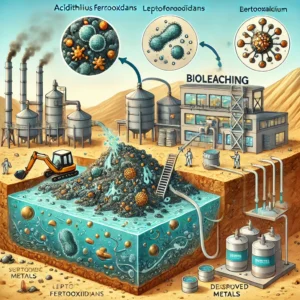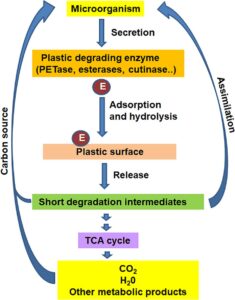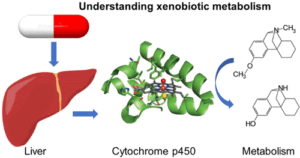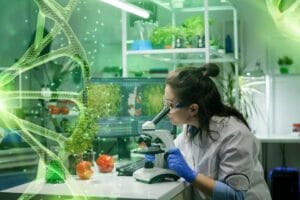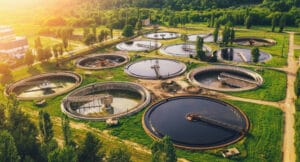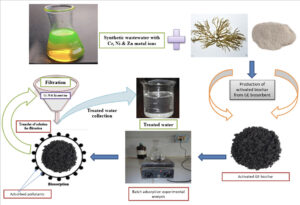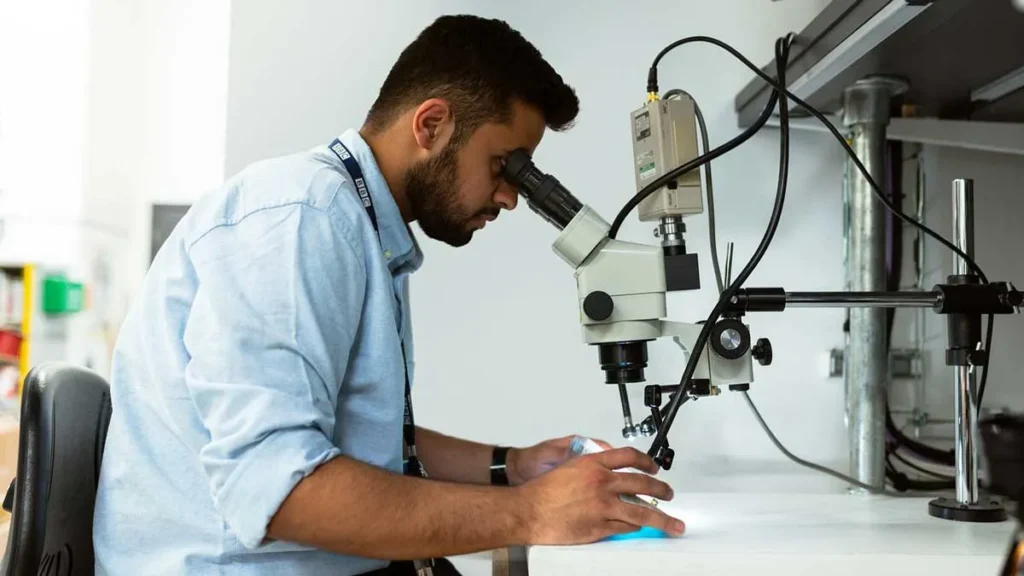Biofilms are structured microbial communities attached to a surface and embedded in a self-produced extracellular polymeric substance (EPS) matrix. This matrix is composed of polysaccharides, proteins, lipids, and extracellular DNA, which help biofilms adhere to surfaces and protect the microbial community.
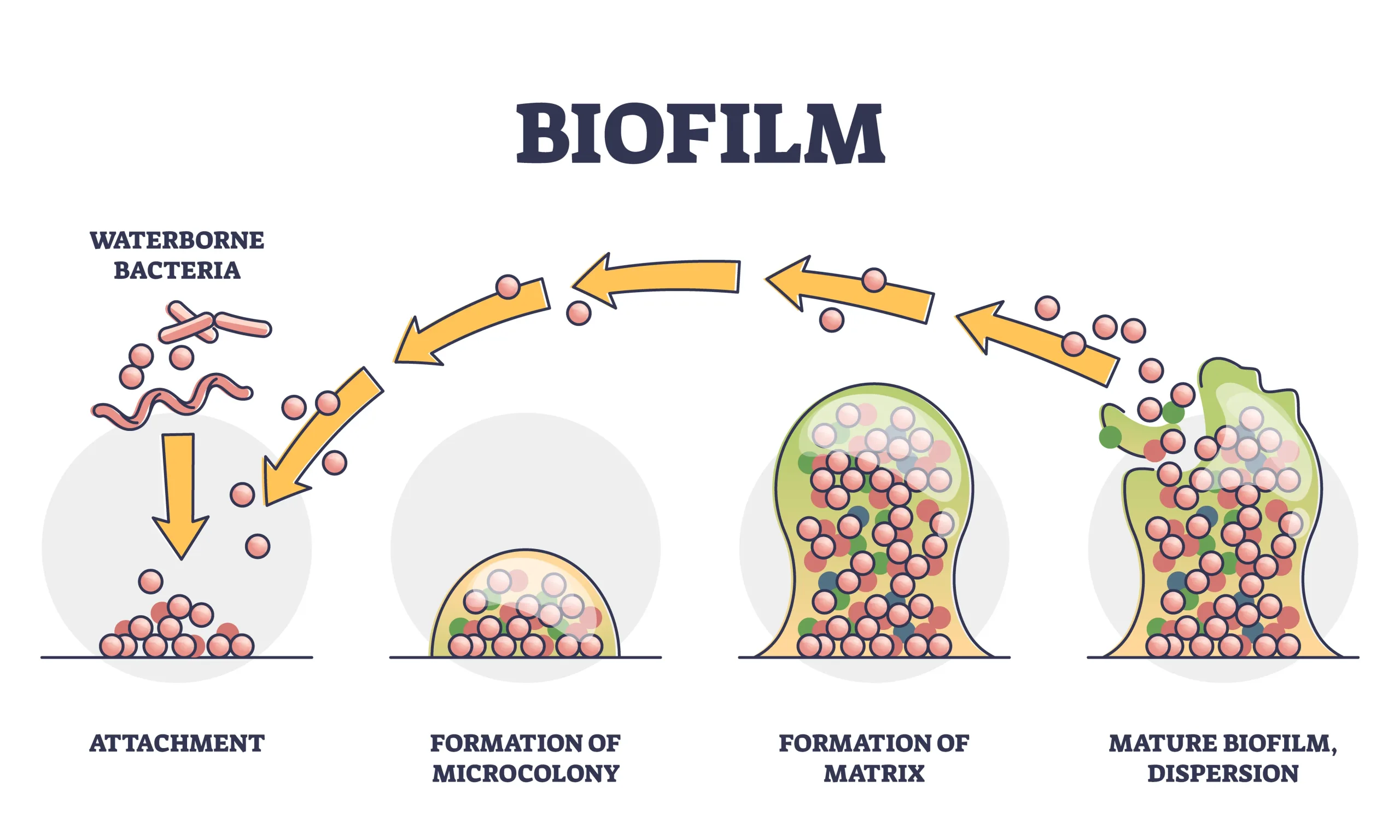
Key Characteristics of Biofilms:
- Surface Attachment: Biofilms form on both biotic (e.g., tissues) and abiotic (e.g., metal, plastic) surfaces.
- Microbial Diversity: They often consist of multiple species of microorganisms, including bacteria, fungi, and archaea.
- EPS Matrix: The EPS protects microbes from environmental stresses, antibiotics, and the immune system.
- Quorum Sensing: Biofilm formation is regulated by quorum sensing, a process of cell-cell communication using signaling molecules.
- Resistance: Microorganisms in biofilms are up to 1,000 times more resistant to antibiotics compared to planktonic (free-floating) cells.
Formation Process:
- Initial Attachment: Microorganisms adhere reversibly to a surface using cell structures like pili or flagella.
- Irreversible Attachment: EPS production begins, anchoring cells permanently to the surface.
- Maturation: The biofilm develops a three-dimensional structure with channels for nutrient and waste exchange.
- Dispersal: Cells from the biofilm detach to colonize new surfaces.
Importance of Biofilms:
- Medical: Biofilms are implicated in chronic infections (e.g., dental plaque, urinary tract infections, and biofilm formation on medical devices like catheters and implants).
- Industrial: They cause biofouling, which can disrupt pipelines, water treatment systems, and equipment.
- Environmental: Biofilms play a crucial role in natural ecosystems, such as in nutrient cycling and bioremediation.
Methods to Study Biofilms:
- Microscopy: Confocal laser scanning microscopy (CLSM), scanning electron microscopy (SEM).
- Staining: Crystal violet assay to quantify biofilm biomass.
- Molecular Techniques: PCR and sequencing to analyze microbial composition.
- Flow Cell Systems: To study biofilm formation under controlled conditions.
Strategies to Control Biofilms:
- Antimicrobials: Use of antibiotics or antifungal agents, though their effectiveness is limited in biofilms.
- Physical Methods: Mechanical cleaning or ultrasound to disrupt biofilms.
- Chemical Methods: Use of surfactants, enzymes, or quorum-sensing inhibitors to prevent biofilm formation.
- Preventive Approaches: Surface coatings with anti-adhesive or antimicrobial properties.
Biofilms are a significant focus of research due to their impact on health, industry, and the environment. Their study involves interdisciplinary approaches from microbiology, biochemistry, and materials science.
Key Roles of Biofilms in Ecosystems
Biofilms play a vital role in ecosystems, influencing nutrient cycles, habitat formation, and the overall functioning of both aquatic and terrestrial environments. Their ability to form stable, resilient communities allows them to contribute significantly to ecological processes.
1. Nutrient Cycling
- Carbon Cycle: Biofilms mediate the decomposition of organic matter, converting it into simpler compounds and releasing carbon dioxide and methane into the atmosphere.
- Nitrogen Cycle: Biofilm-associated microbes perform critical steps like nitrogen fixation, nitrification, and denitrification, which are essential for maintaining nitrogen balance in ecosystems.
- Sulfur Cycle: Sulfate-reducing bacteria in biofilms contribute to the sulfur cycle by reducing sulfate to hydrogen sulfide, especially in anaerobic environments.
2. Primary Production
- In aquatic ecosystems, photosynthetic biofilms (e.g., algae and cyanobacteria) are important primary producers. They convert sunlight into energy and release oxygen, supporting higher trophic levels.
3. Habitat Formation
- Biofilms act as a foundation for the development of microbial communities and higher organisms. They provide a stable microenvironment, trapping nutrients and creating habitats for invertebrates and other microorganisms.
4. Biodegradation and Bioremediation
- Biofilms play a crucial role in breaking down pollutants, including hydrocarbons, pesticides, and heavy metals. This makes them essential in natural attenuation processes and engineered systems like wastewater treatment plants.
5. Water Quality Maintenance
- In freshwater ecosystems, biofilms help filter and purify water by trapping suspended particles, metabolizing organic pollutants, and cycling nutrients.
6. Soil Ecosystem Services
- In soil, biofilms stabilize aggregates, improving soil structure and water retention. They also help mobilize nutrients like phosphorus and iron for plant uptake.
7. Symbiosis with Higher Organisms
- Biofilms often form beneficial relationships with plants and animals:
- Plant Rhizosphere: Biofilms around plant roots (e.g., rhizobacteria) enhance nutrient uptake, provide growth-promoting factors, and protect plants from pathogens.
- Animal Hosts: Biofilms in the gut microbiome of animals aid in digestion and provide essential nutrients.
8. Defense Against Environmental Stress
- Biofilms enhance the resilience of microbial communities by protecting them from desiccation, UV radiation, and predation, particularly in extreme environments like deserts, polar regions, and deep-sea vents.
9. Biofilm Formation in Extreme Environments
- In ecosystems like hot springs, deep-sea hydrothermal vents, and acidic mine drainage sites, biofilms support extremophiles, which drive unique biochemical processes like chemosynthesis.
Ecological Implications of Biofilms
- Biodiversity Maintenance: Biofilms support diverse microbial populations and serve as a food source for higher organisms, maintaining food web stability.
- Ecosystem Stability: They contribute to ecosystem resilience by providing services that buffer against environmental changes.
- Pollution Indicators: Changes in biofilm composition can act as bioindicators of pollution or environmental stress.
Biofilms are indispensable for ecosystem functioning and sustainability. Their role extends beyond microbial communities to influence broader ecological processes and interactions. Understanding their dynamics is critical for managing natural resources and mitigating environmental challenges.
Stages of Biofilm Formation and Development
The formation and development of biofilms are dynamic processes that involve a series of well-coordinated steps, transitioning from free-floating (planktonic) microorganisms to a structured, surface-attached community. This process is influenced by environmental factors, microbial signaling, and the availability of nutrients.
1. Initial Attachment
- Process: Planktonic microorganisms come into contact with a surface and attach transiently through weak interactions like van der Waals forces and hydrophobic interactions.
- Key Features:
- Attachment is reversible at this stage.
- Motility structures, such as flagella or pili, help microbes reach and explore surfaces.
- Environmental Factors:
- Surface properties (roughness, hydrophobicity, or charge).
- Presence of nutrients and flow conditions.
2. Irreversible Attachment
- Process: Microorganisms adhere more firmly to the surface through the production of adhesive structures (e.g., fimbriae, adhesins) and the secretion of an extracellular polymeric substance (EPS).
- Key Features:
- EPS begins to anchor cells permanently to the surface.
- Irreversible attachment marks the commitment to biofilm formation.
- Signaling:
- Quorum sensing (cell-to-cell communication) may initiate, allowing microbes to sense population density and regulate gene expression.
3. Microcolony Formation
- Process: Attached cells start dividing, forming small clusters or microcolonies.
- Key Features:
- Microcolonies consist of a few cells surrounded by EPS.
- Intercellular signaling intensifies, coordinating growth and behavior.
- Microbial cells start to differentiate roles, showing early signs of a structured community.
- EPS Composition:
- Polysaccharides, proteins, lipids, and extracellular DNA (eDNA).
- EPS provides structural stability and mediates adhesion to the surface.
4. Biofilm Maturation
- Process: Microcolonies grow into a fully developed, three-dimensional biofilm with complex architecture.
- Key Features:
- Heterogeneity: Biofilms exhibit spatially distinct regions due to gradients of oxygen, nutrients, and waste products.
- Channels and Pores: Development of water channels facilitates nutrient and waste exchange.
- Diverse Functions: Different zones within the biofilm may harbor metabolically active, dormant, or stressed cells.
- Resilience: Mature biofilms are highly resistant to antimicrobials, environmental stress, and mechanical forces.
5. Dispersal
- Process: Biofilm cells detach and return to a planktonic state to colonize new surfaces.
- Key Features:
- Dispersal can be active (via enzymatic degradation of the EPS) or passive (due to mechanical forces like fluid shear).
- Cells released from biofilms are often better adapted for survival and colonization.
- Triggers:
- Environmental stress (e.g., nutrient depletion, oxygen scarcity).
- Quorum sensing signals indicating overcrowding.
Factors Influencing Biofilm Formation
- Surface Properties:
- Rough, hydrophobic, or charged surfaces promote biofilm formation.
- Microbial Traits:
- Motility, adhesion ability, and EPS production are critical.
- Environmental Conditions:
- Nutrient availability, pH, temperature, and flow conditions.
- Quorum Sensing:
- Signaling molecules regulate biofilm development and dispersal.
- Host Factors (for biofilms in living systems):
- Presence of host immune responses or biofilm-promoting surfaces (e.g., medical devices).
Applications and Implications
- Understanding biofilm formation helps in developing strategies to manage biofilms in both beneficial (e.g., wastewater treatment, bioremediation) and harmful (e.g., medical infections, biofouling) contexts.
- Targeting specific stages, such as preventing initial attachment or disrupting quorum sensing, can be effective in controlling biofilms.
This multistage process demonstrates the adaptability of microorganisms and highlights why biofilms are ubiquitous and resilient in diverse environments.

